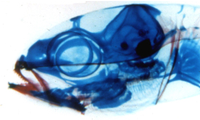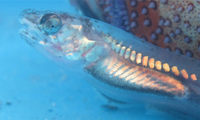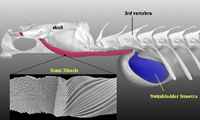Functional and Evolutionary Morphology Laboratory



The laboratory of Functional and Evolutionary Morphology has a long tradition in the study of musculo-skeletal systems. The starting point of our unit research concerns the ecomorphology. We aim to understand the (functional) morphology and evolution of Teleost fishes and Arthropods in order to understand how organisms can adapt to their (changing) environment. We use as most as possible multidisciplinary approaches by combining comparative and experimental methods of analysis, studies in the laboratory and in the field to describe and understand at best the relationships between the animal performance and its environment. The current research projects concern mainly:
The study of the fundamental components of the acoustic communication (sound production and hearing) in fishes. The studies describe and explain the mechanisms implied in sound production and reception in various taxa of adult teleosts. It integrates data in (functional) morphology, histology, physiology, behaviour, ontogeny, biogeography as well as physics and acoustics. Moreover, the comparison of taxa living in different environment attempts to clarify the influence of environmental factors on the sound production.
The study of form and functions of the musculo-skeletal system of different fish species. One aim is to study the tempo and mode of morpho-functional diversification in various families during their evolutionary history by using models of trait evolution and testing evolutionary hypotheses using phylogenetic comparative methods.
- Dr Bruno Frédérich (postdoc, F.R.S. - FNRS)
- Dr Orphal Colleye (postdoc, assistant)
- Damien Olivier (PhD student, FRIA)
- Dr Frédéric Bertucci (postdoc)
- Antoine Tack (technician)
- Laura Gajdzik (PhD student, F.R.S. - FNRS)
- Loïc Kéver (PhD student, FRIA)
- Laetitia Berten (PhD student, FRIA)
- Geoffrey Mélotte (PhD student, FRIA)
- Prof Pierre Vandewalle (prof emeritus)
- Dr Kelly Boyle (postodoc)
- France Collard (PhD student, FRIA)
- Nicole Decloux (technician)
- Dr Philippe Compère (Researcher)
- Mariella Lunetta (secretary)
- Hydrophones (B&K, DSG, HTI)
- Auditory Evoked Potential (AEP) recording technique
- High Speed camera (Redlake Motion Pro)
- EMG techniques
- Polytec laser Doppler Vibrometer (LDV)
- SEM and TEM techniques
- Histology
- Avisoft-SASLab pro (Avisoft Bioacoustic) + Adobe audition
- AMIRA (3D reconstruction)
- Accredited experimental rooms


